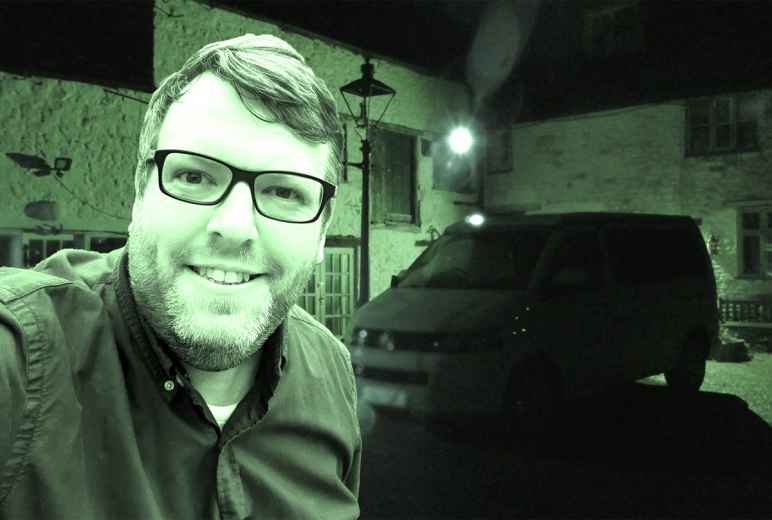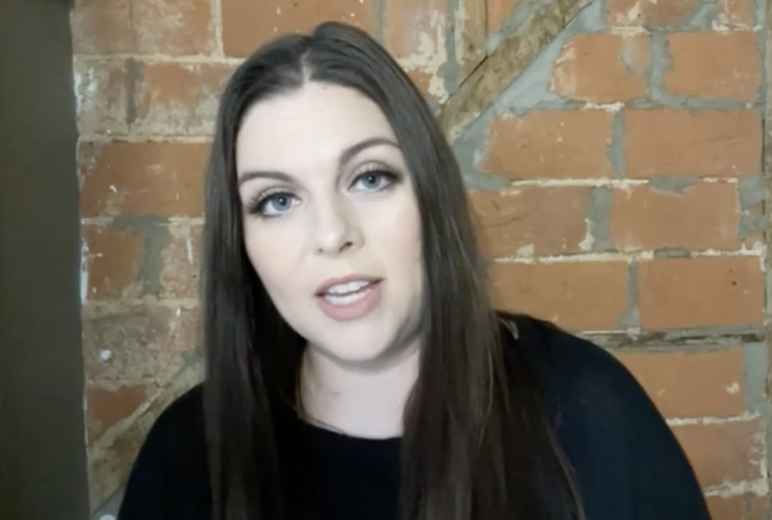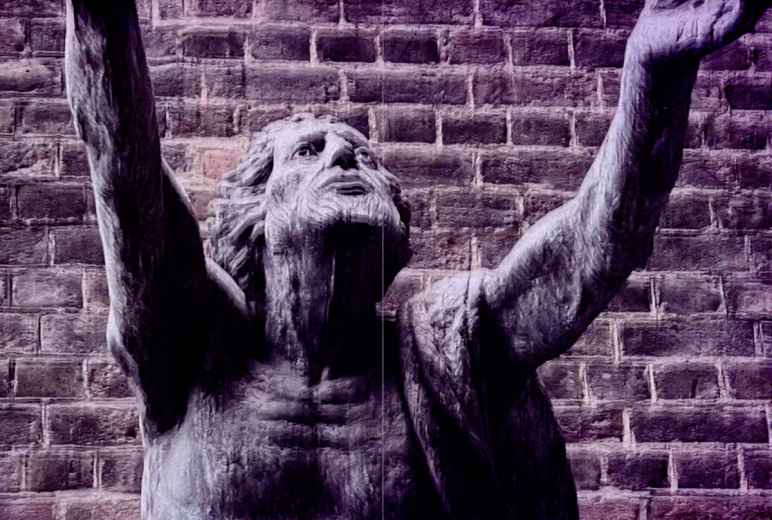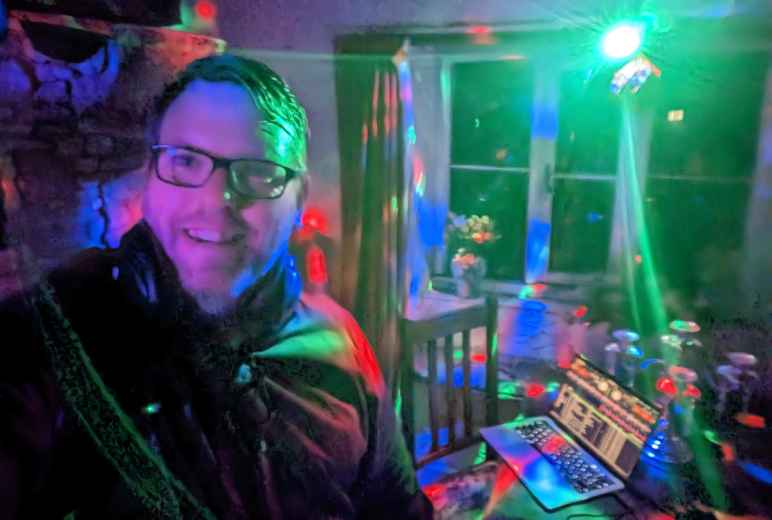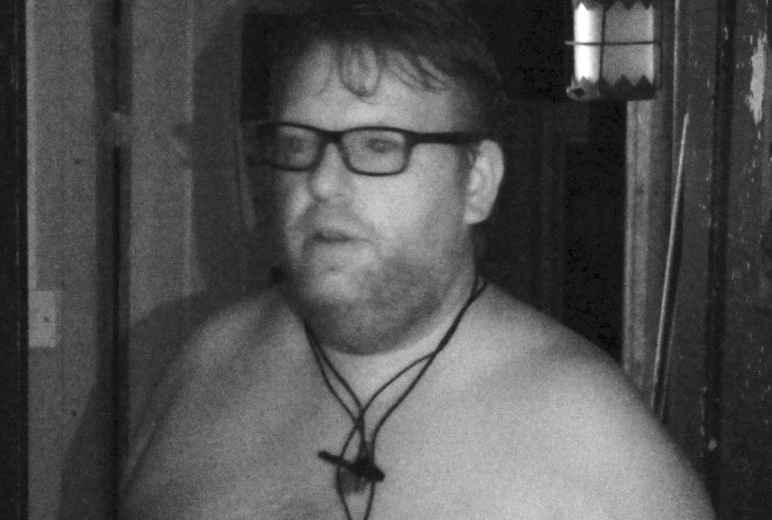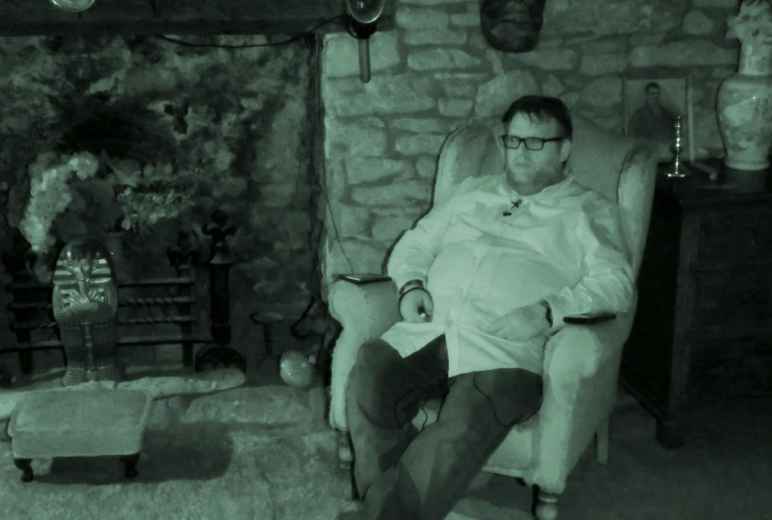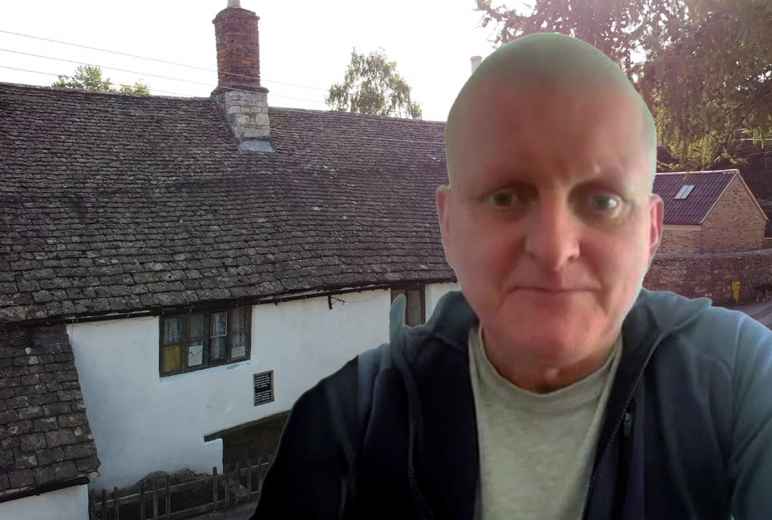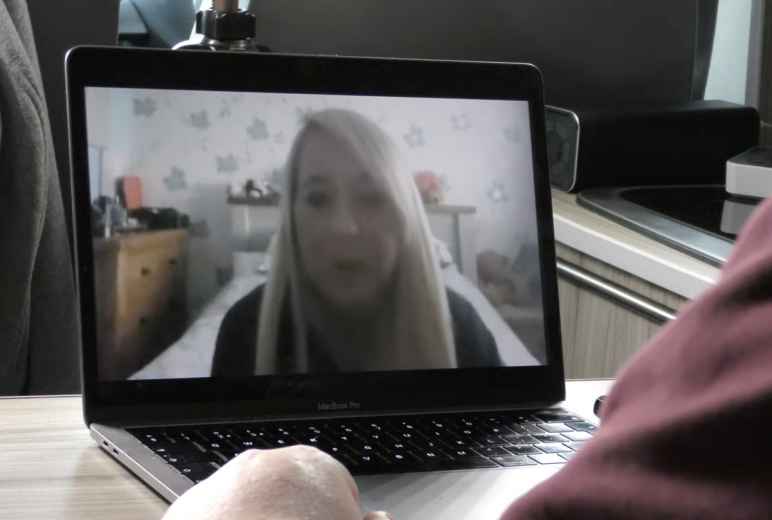REVIEW: 'Bob Lazar: Area 51 And Flying Saucers'
This article is more than five years old and was last updated in June 2021.
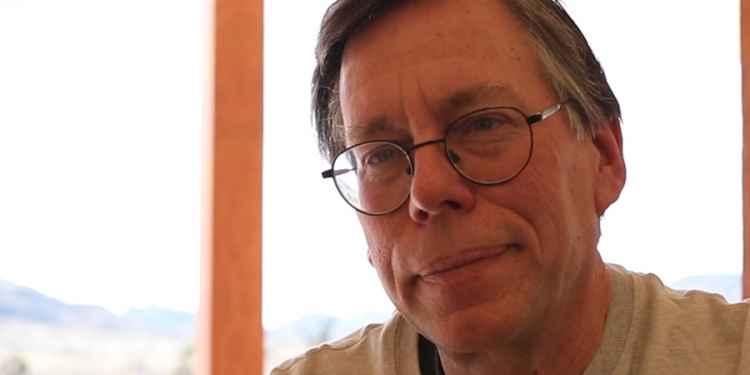
After 30 years mostly out of the limelight, Bob Lazar, the famed Area 51 whistleblower, has stepped in front of the camera in a new documentary.
Jeremy Corbell's film is less about delving deeper into Lazar's outlandish claims of back-engineering extraterrestrial alien propulsion systems in a secret base in Nevada, and instead attempts to examine how the last three decades of Bob's life have changed as a result of his revelations.
At least that's what I think the aim of the documentary was, although prior to its release Corbell promised that his film would shake the foundations of our beliefs and permanently alter the landscape of the debate. The documentary was very well shot and edited, but it did very little to add to the debate.
"My name is Bob Lazar. I'm known for working at a classified base known as S-4 out in the Nevada dessert near Area 51 and there, we reverse-engineered alien spacecraft and it's changed my life a lot."
Bob Lazar
The 97 minute feature film is made up of around 15 minutes of archive footage, all taken from VHS video tapes, all of which is in the public domain already. However, these archive clips are essential to the narrative of the film and help to tell the backstory of Bob Lazar's fantastical claims of no less than nine alien spacecrafts in the US government's hands in a secret Groom Lake facility.
The rest of the film is made up of arty shots of Jeremy talking on the phone to his interviewees, as well as some face-to-face interviews with Lazar himself, something that has become increasingly rare since the 1990s.
If the intention of this documentary really is to "shake the foundations of our beliefs", then where it fails is that it doesn't add any new information beyond these old video clips. Corbell doesn't meaningfully attempt to challenge or validate Lazar's claims and his promise of the inclusion of rare and never before revealed footage seems a little misleading.
At one point in the documentary, Corbell does talk about the controversy that surrounds Lazar and the fact that his educational background can not be confirmed, which raises some questions over whether he'd have had the necessary qualifications to work within a secret government department. However, as quickly as the film highlights this concern, it just as quickly glosses over and basically concludes by saying don't worry about that, don't let it distract you.
In the most confrontational part of the film, Corbell brings up the widely believed claim that Lazar was being used by the government to spread misinformation in order to distract the public from what is really happening at Groom Lake. Bob simply answered with, "what's the evidence to support those claims?" Corbell then dropped it without pushing him any further, with Bob saying "I thought I set the record straight 30 years ago."
Despite this failure, the documentary did succeed in its quest to examine Lazar's life and how it has changed since he first came forward with his story in 1989 in an interview with investigative reporter George Knapp on Las Vegas television station KLAS. Knapp, who came to know Bob well, also features heavily in the film.
Lazar says that blowing the whistle on the secret project he was working on has changed "every aspect" of his life. When asked if his life has changed in a positive or negative way, Lazar said "well, for the most part negative. It's really difficult to find positive aspects of that."
The negativity comes as a result of 30 years of being scrutinised, called a liar, and allegedly being harassed and threatened by government departments. Lazar tells Corbell, "I don't like being in the public eye. I don't have money for doing this. And quite frankly I could make up a better lie, but I have no motivation to lie."
What is made clear in the documentary is that the people that know Lazar the best, believe him the most. Knapp, after three decades, is still convinced. He tells Corbell in the film, "the evidence that he's telling the truth outweighs the evidence that he's not."
Advertisement ‐ Content Continues Below.
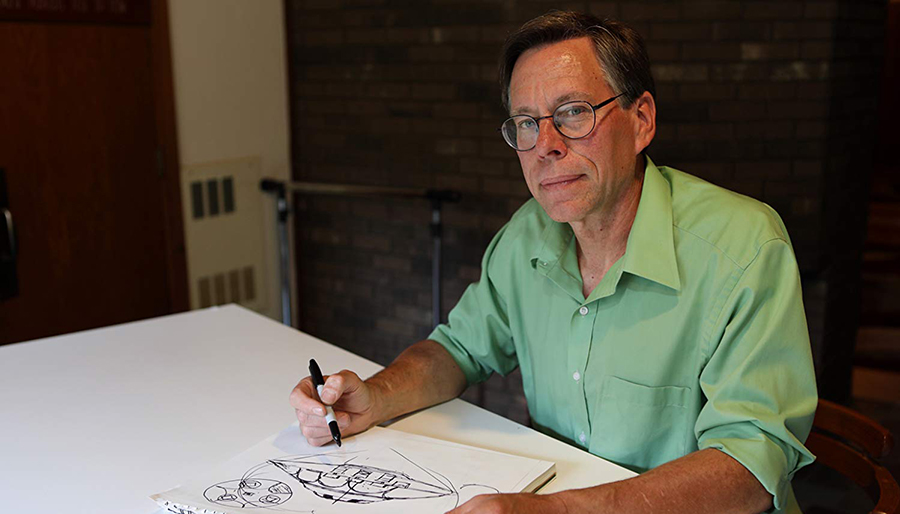
There were a couple of interesting revelations in the film, the first of which was Lazar retracting the claim he made in 1989 that he saw a live alien at the secret base. The story related to his time working at a base known as "S-4", located near Papoose Lake, south of the main Area 51 facility.
Lazar said he was walking along a corridor in the base one day when he saw what he described as "something small with long arms" through a small window in a door leading to a hangar. At the time Bob believed this was an extraterrestrial visitor, one of many who had been nicknamed "the kids" by the base staff. In Corbell's film, Lazar admits that he may have been mistaken. He told the filmmaker, "I don't think I saw an alien at S-4". He says that the encounter was nothing more than a glance through a window. He added, "I think these guys had a doll in a small chair, which was similar to what was in the craft."
I think this admission is fair enough, it doesn't discredit Lazar's story, it doesn't strengthen it either. It does perhaps suggest that he, the media, or a combination of the two did get carried away by the story back in the late-80s and early-90s.
Another interesting moment came when Corbell and Lazar were discussing a biometric security system that had been in use during Lazar's time working at S-4. Bob had always talked about a hand scanner, staff members would place their hand on the device's pins underneath a light. The device was able to measure the length of the bones in their fingers in order to determine a positive identity.
This type of technology would have been very advanced for the 1980s and its existence has never been proven, until recently. Corbell was able to find photographs of the device online. He told Lazar that "all of a sudden this article comes out and it says that at the Nellis Range there was indeed this hand scanner." According to Corbell the Air Force had admitted that they had been using this type of technology since the 80s and posted photographs.
Upon seeing the photos, a joyous Lazar said "I never thought I'd see one of these again." He added, "I tried to explain this to people so many times and they either didn't believe me or say 'yeah, I'm sure there is'." He then told Corbell, "I can't believe you found a picture of this. This was the scanner used to get in to S-4."
If this technology really has only just been made public knowledge, then it is pretty much the only part of Lazar's story that has been proven to be true since he first told it in 1989.
The film is narrated by Oscar-nominated actor, Mickey Rourke. Frankly, he adds nothing to the film. Throughout the documentary he mumbles new-age cliches which are neither meaningful or constructive. These are set to what looks like animations taken directly from Fox Mulder's screensaver.
The narrater would have been put to better use if he'd gone into a little more detail about the story, like a narrater normally does. For example in one part of the film Corbell was talking on the phone with Knapp about an elusive stable variant of the element 115. To this point it has not been mention in the film that this alleged extraterrestrial fuel source isn't inherently stable, the filmmaker simply assumes that viewers already have this knowledge.
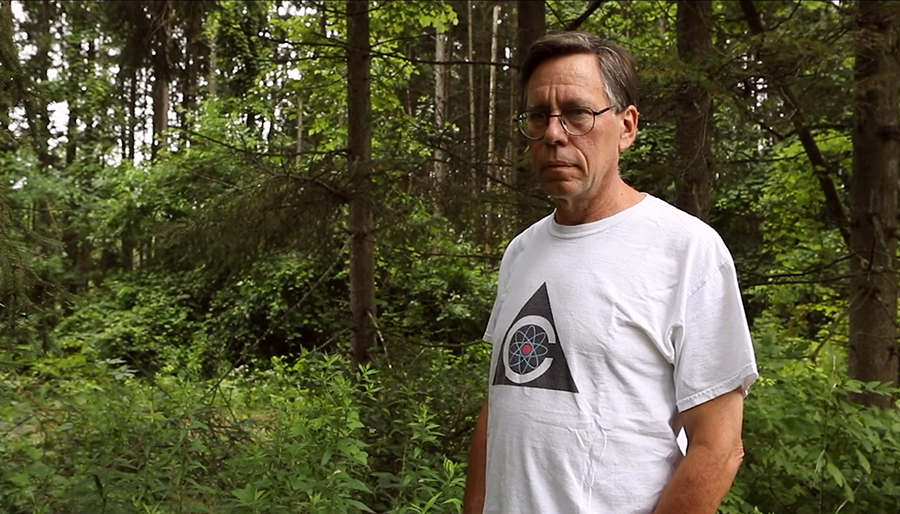
In the final 20 minutes of the film things start to get really interesting and the big moment is coming. Lazar calls Corbell to say that "something's really come up that's important". Upon meeting at a secluded-looking woodland location, they agree that the footage they are about to shoot is going to be kept securely and unedited, it will only ever be touched if they both agree.
From behind the camera we hear Corbell say "the only record of this is going to be the audio on this one file." He then asks Lazar, "did you ever get a piece of element 115 out of Los Alamos?" Bizarrely, despite this build-up and the tease of the juiciest bit of information in the documentary so far, we don't get to hear Bob's answer, but it's made clear that he did answer on film.
Quite why this was included in the final film if we don't get to see it is a little odd, presumably it was Bob's idea to test the powers that be. If he confessed to something on tape, would the men in black come knocking on his door? Well, as it happens, yes, they did.
Apparently, the next day Bob science supplies company, United Nuclear, was raided by the FBI and the conversation about element 115 he'd had the previous day with Corbell was directly referenced during the raid. The FBI conducted the raid under the pretence that they were looking for some old documents relating to a customer's purchase of a potentially toxic substance, but Bob thinks it was a reminder that they are still watching him.
The film ends with Mickey Rourke saying "if you don't believe it, well, that's your problem" ...it's not really the viewers problem if they don't believe. As Carl Sagan said, "extraordinary claims require extraordinary evidence." The onus of proof is on the claimant.
The film lacks any new content, it is mostly a re-hash of old archive footage wrapped in fancy modern production techniques. The few interesting moments make up no more than five minutes of the film. Having said that, if you know nothing about Bob Lazar, it is worth a watch. The film serves as a good overview of his claims and touches on the counter arguments, even if it fails to examine them.
'Bob Lazar: Area 51 And Flying Saucers' is available to watch online now. You can find out more at thelazarstory.com.
More Paranormal Documentaries View All
'My Ghostly Footsteps': Filmmaker Guy Gilbert Tries To Get To The Bottom Of Childhood Haunting
September 14, 2023
Katrina Weidman, Yvette Fielding, Jayne Harris & Barri Ghai Feature In New PARAFlixx Documentary
August 23, 2023
'God Versus Aliens': A New Documentary Exploring The Intersection Of Faith, Society & UFOs
August 08, 2023
Related Content
Daily Horoscopes
You May Also Like
